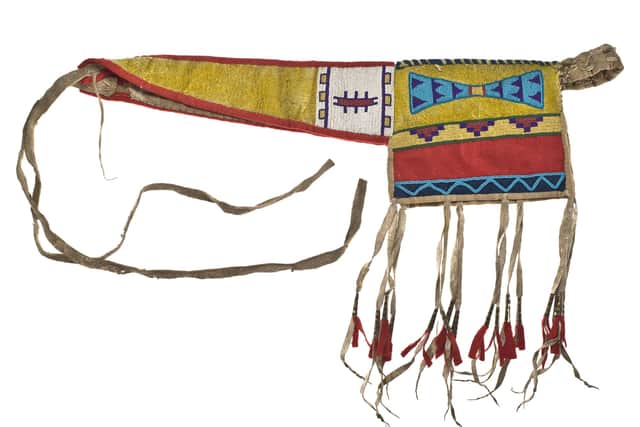Blackfoot people reconnected with lost objects held in Edinburgh
and live on Freeview channel 276
National Museum of Scotland has been working with the Blackfoot Confederacy on a programme that opens up collections of often sacred items now held in the UK.
Members of the confederacy – which is made up of four separate nations or tribes traditionally rooted in Montana in the US and Alberta in Canada –have now been able to see the objects held in Edinburgh for the first time.
Advertisement
Hide AdAdvertisement
Hide AdDanielle Heavy Head, of the Blackfoot Digital Library, said it was like being “reunited with children” who were taken away.


She said: “It is hard to express in English how important it is for Blackfoot people to connect with our historical items.
"To the Western perspective, these are just objects, but for the Blackfoot, they are living beings and the museum visits are like being reunited with children who were taken away.
Advertisement
Hide AdAdvertisement
Hide Ad"Seeing and touching the items allows Blackfoot people to reconnect with the material and their ancestors. The moment of first encountering the objects is an epiphany in self-identity – these objects help to understand who I am because they are part of who I am.”
Blackfoot quillwork, which was traditionally crafted using dyed porcupine quills with only a handful of makers earning a "transferred rite” to produce the garments - became the focus of the work with NMS, with 24 items in its collection of particular interest.
A cradle and a horse’s crupper, that was reinforced with part of an old pair of Levis, were among them.
A visit of Blackfoot people to Edinburgh was postponed due to the pandemic last year, with the work moving online as a result of the health emergency.
Advertisement
Hide AdAdvertisement
Hide AdDigital imaging techniques and spatial web technologies – which integrates tools such as Artificial Intelligence and Augmented Reality, were used to present the items to a gathered crowd of Blackfoot elders at the University of Lethbridge in Alberta.
Despite not being able to see the items in person, showing the items virtually brought the people closer to the symbols of their culture closer than ever before.
"Blackfoot artists want to learn how to make our art and they need to see the traditional designs, materials, and techniques. Even without being able to touch the items, the Blackfoot people can connect with them,” Ms Heavy Head added.
Trading or selling objects for food to European travellers and settlers became the norm for the Blackfoot people, who today live in a number of protected reservations.
Advertisement
Hide AdAdvertisement
Hide Ad"These transactions often reflected unequal power relations between Scots and Indigenous peoples in North America,” the article for NMS said.
The very process of making embroidering and weaving the quillwork was disrupted by European colonists, who introduced glass beads to the Blackfoot, which were then adopted into designs.
Seeing the 19th Century items has allowed Blackfoot people to trace changes in techniques over time with the virtual programme helping “ongoing efforts to revitalise Blackfoot art and traditional knowledge.”
The University of Southampton and Central St Martin’s is also involved in the project in the UK.
A message from the Editor:Thank you for reading this article. We're more reliant on your support than ever as the shift in consumer habits brought about by Coronavirus impacts our advertisers.
If you haven't already, please consider supporting our trusted, fact-checked journalism by taking out a digital subscription.
Comment Guidelines
National World encourages reader discussion on our stories. User feedback, insights and back-and-forth exchanges add a rich layer of context to reporting. Please review our Community Guidelines before commenting.